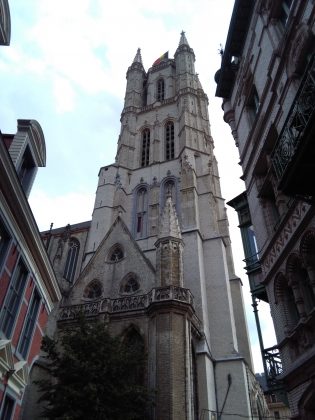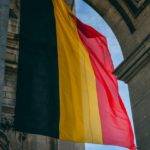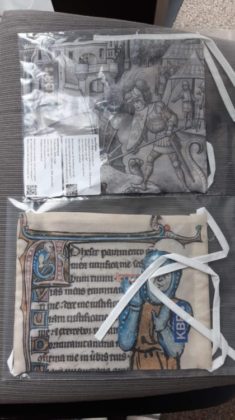As a Belgian historian and teacher, I’ve told my pupils several times about Jan van Eyck and Hubert van Eyck. They were brothers and also the painters of the Ghent Altarpiece, maybe the most famous painting in Belgium. But who were these van Eyck brothers and their art actually? Let me tell you a bit about the personal life of these artist and, of course, a bit about their artwork.
Who are the painter brothers van Eyck (Jan and Hubert)
Although they are famous around the world, there is still a lot of mystery around them and their personal lives. But based on their paintings and art, they are considered as the peak of the Early Netherlandish Paintings.
Hubert van Eyck
Let me start with Hubert van Eyck, the least known of the brothers van Eyck.
There are only a couple of archive records found about him, so there is not that much to say. He is, of course, the brother of Jan, and they followed a bit of the same life path. But it would be Jan van Eyck and his paintings that are known in our heritage.
Jan van Eyck (also called: Jean van Eyck)
His Dutch name is Jan van Eyck or the Latin version Johannes van Eyck, but a lot of (foreign) languages refer to him as Jean van Eyck or John van Eyck. His last name is not one of the most easy ones, making people refer to him as J. van Eyck, Van Ajk and even Van Ike.
Whatever you call him, Jan van Eyck lived around the periode of 1390 – 1441. He was, just like his brother Hubert, a painter in what was known as the Prince-Bishopric of Liège (Principality of Liège).
Although Hubert is the oldest of the brothers, it is not clear if he also was the teacher or master of Jan, when it came to painting. The question also rises when you talk about the famous Ghent Altarpiece: how much did Hubert or Jan paint?
Already during his life, Jan van Eyck was known for his naturalistic style and his talent to paint with oil. He also signed his paintings with his name, which was quite unusual during the Middle Ages, where a lot of artists stayed anonymous. And that’s just one of the things that prove that Jan van Eyck was ahead of his time.

Where did the brothers van Eyck come from?
The birthplace of the brothers van Eyck? There is, after years of research and debates, still not a clear answer. We still are not sure where Jan and Hubert van Eyck come from, but in general it is agreed that the city of Maaseik (during earlier centuries known as Maaseyck). You can still visit this city in the north of the province Limburg in Belgium (in the south, you find the Gallo-Roman Museum I already wrote about). His daughter would also live as a nun in this city, after his death.
We know more about the rest of Jan’s life, because of more historical documents that are stil available in the archives. That’s how we know that he lived in Bruges, to be the official court painter of Philip the Good, the Duke of Burgundy who died in 1419. This underlines his talent and fame as a painter.
It was Philip the Good that sent Jan van Eyck on many far away travels. During his travels, Jan would make sketches of what he saw. We can safely assume that these travels were not only for painting, but were some kind of undercover diplomatic missions. For example, the sketches of foreign environments would come in handy during future battles.
After his death, Jan van Eyck was buried in the Sint-Donaas cathedral in Bruges. Unfortunately, this church was destroyed in the aftermath of the French Revolution.
Artwork: the famous Jan van Eyck paintings
We are lucky to still be capable of enjoying the sight of some of the famous artwork paintings of Jan van Eyck.
There is of course the Ghent Altarpiece, which restoration was finished in 2020. But also think of the Arnolfini portrait, the Annunciation, portrait of a man with a turban and many more.
I will write more about these paintings and the artwork of Jan van Eyck, and why it is of so much importance in art history. So keep tuned!
The painter Jan van Eyck and Ghent
If you want to see the Ghent Alterpiece or just want to relive a bit of the history and works of the van Eyck Brothers, then visiting the city of Ghent (Belgium) is a good idea. I studied at the university, and lived many years, there, and a visit to the city is a must for everybody who is on holiday in Belgium.
You can find the Ghent Altarpiece in the Saint-Bavo cathedral in the center of the city (just around the corner of some other must see places like the Belfort, Korenmarkt and Graslei).

But also statues and street art depict some van Eyck history. Can you find them all?
Sources and further readings:
Wikipedia
Van Eyck 2020
Britannica





